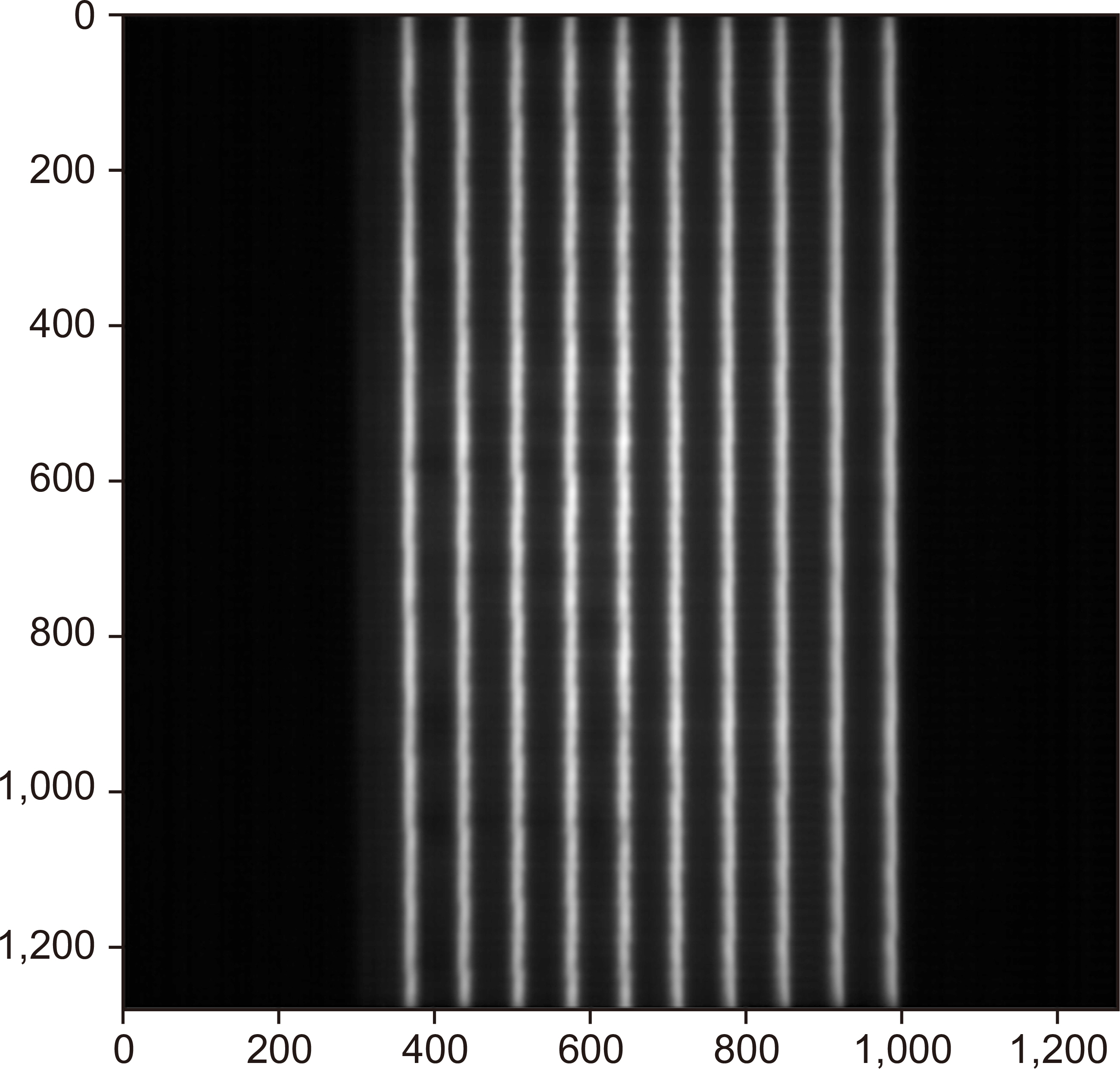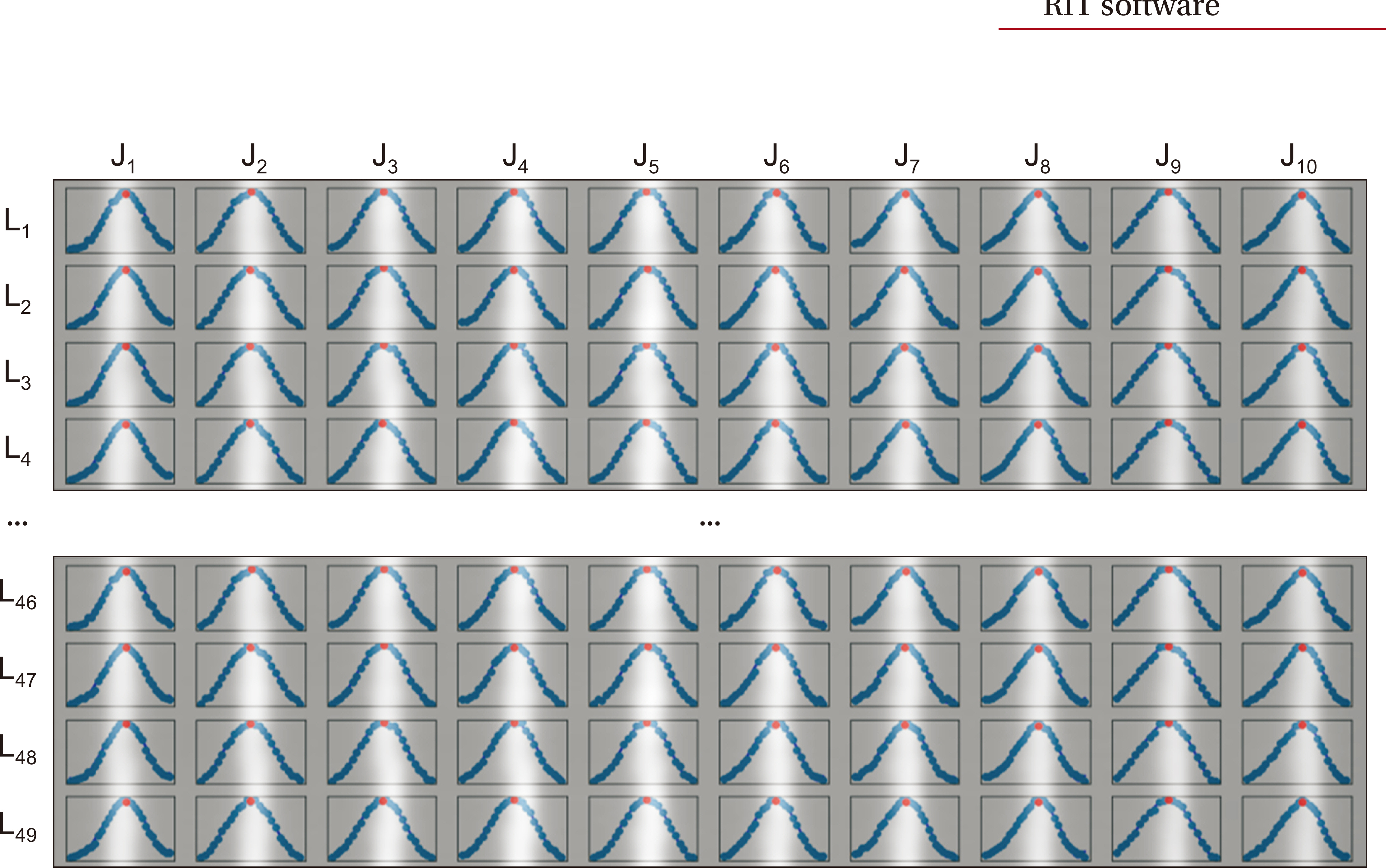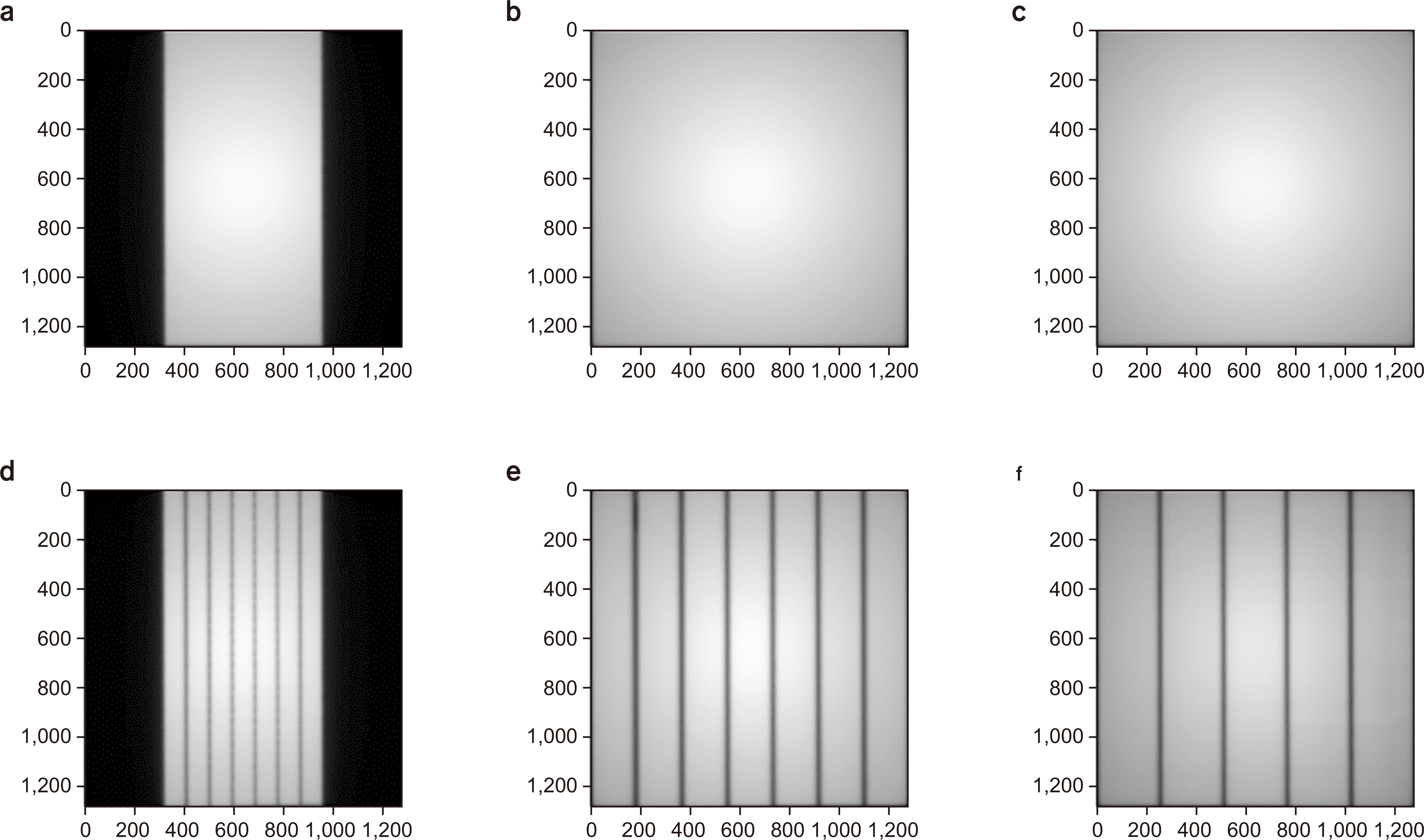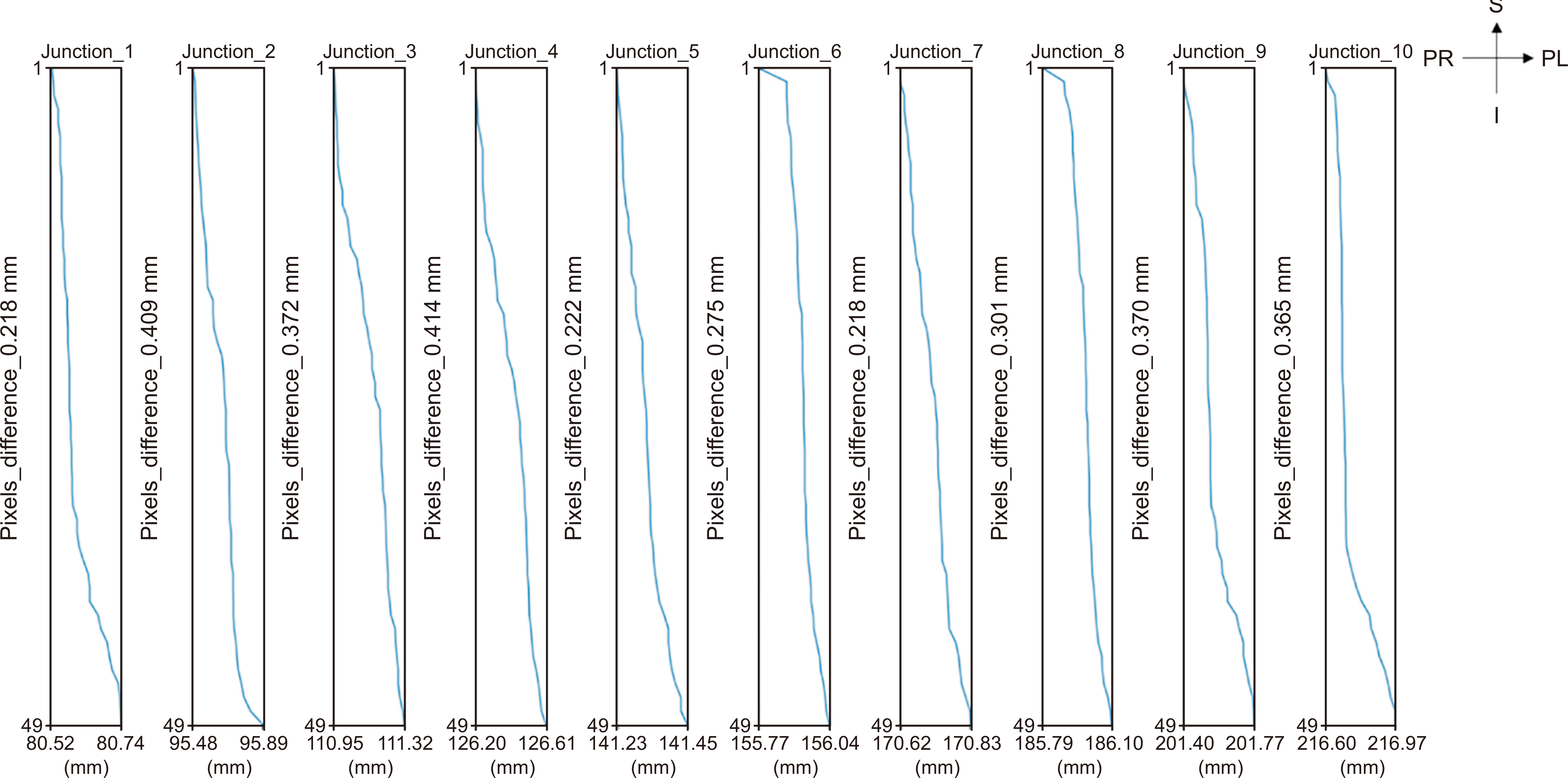Prog Med Phys.
2024 Jun;35(2):45-51. 10.14316/pmp.2024.35.2.45.
Analysis of the Multi-Leaf Collimator Quality Assurance for the HalcyonTM Linear Accelerator
- Affiliations
-
- 1Department of Radiation Oncology, Seoul National University Hospital, Seoul, Korea
- 2Institute of Radiation Medicine, Seoul National University Medical Research Center, Seoul, Korea
- 3Biomedical Research Institute, Seoul National University Hospital, Seoul, Korea
- 4Department of Radiation Oncology, Seoul National University College of Medicine, Seoul, Korea
- KMID: 2557158
- DOI: http://doi.org/10.14316/pmp.2024.35.2.45
Abstract
- Purpose
Accurate operation of the multi-leaf collimator (MLC), a key technology in intensity modulated radiation therapy (IMRT), is essential for safe and optimal radiation treatment. The HalcyonTM linear accelerator has a collimator with low leakage and radiation transmission, making it suitable for IMRT. The limitations of the existing HalcyonTM MLC quality assurance (QA) method were supplemented with a mathematical method, and the results were analyzed.
Methods
Electric portal imaging device (EPID) images obtained by performing the MLC QA plan on the HalcyonTM was analyzed using Python. The picket fence tests were performed and compared using the maximum pixel value and mathematical methods. Dose rate, gantry speed, and leaf speed variation plan were performed for dose transmission comparison.
Results
For the maximum pixel value, the minimum distance between leaf junctions was 13.86 mm, and the maximum was 16.06 mm. However, for the mathematical method, the minimum and maximum were 14.54 mm and 15.68 mm, respectively. This suggests that setting the peak value to the highest value may cause an error in interpretation due to the limitations of the pixels of the EPID image. Performing QA on the remaining items confirmed that the measured values were within 3% of tolerance.
Conclusions
The presented analysis method applied to the MLC QA can derive more reasonable and valid values than existing methods, which will help with MLC monitoring by reducing errors in excessive interpretation.
Keyword
Figure
Reference
-
References
1. Bortfeld T. 2006; IMRT: a review and preview. Phys Med Biol. 51:R363–R379. DOI: 10.1088/0031-9155/51/13/R21. PMID: 16790913.
Article2. Teh BS, Woo SY, Butler EB. 1999; Intensity modulated radiation therapy (IMRT): a new promising technology in radiation oncology. Oncologist. 4:433–442. DOI: 10.1634/theoncologist.4-6-433. PMID: 10631687.
Article3. Teoh M, Clark CH, Wood K, Whitaker S, Nisbet A. 2011; Volumetric modulated arc therapy: a review of current literature and clinical use in practice. Br J Radiol. 84:967–996. DOI: 10.1259/bjr/22373346. PMID: 22011829. PMCID: PMC3473700.
Article4. Mu G, Ludlum E, Xia P. 2008; Impact of MLC leaf position errors on simple and complex IMRT plans for head and neck cancer. Phys Med Biol. 53:77–88. DOI: 10.1088/0031-9155/53/1/005. PMID: 18182688.
Article5. Klein EE, Hanley J, Bayouth J, Yin FF, Simon W, Dresser S, et al. 2009; Task Group 142 report: quality assurance of medical accelerators. Med Phys. 36:4197–4212. DOI: 10.1118/1.3190392. PMID: 19810494.6. Hanley J, Dresser S, Simon W, Flynn R, Klein EE, Letourneau D, et al. 2021; AAPM Task Group 198 Report: an implementation guide for TG 142 quality assurance of medical accelerators. Med Phys. 48:e830–e885. DOI: 10.1002/mp.14992.
Article7. Antypas C, Floros I, Rouchota M, Armpilia C, Lyra M. 2015; MLC positional accuracy evaluation through the Picket Fence test on EBT2 films and a 3D volumetric phantom. J Appl Clin Med Phys. 16:5185. DOI: 10.1120/jacmp.v16i2.5185. PMID: 26103188. PMCID: PMC5690090.
Article8. Christophides D, Davies A, Fleckney M. 2016; Automatic detection of MLC relative position errors for VMAT using the EPID-based picket fence test. Phys Med Biol. 61:8340–8359. DOI: 10.1088/0031-9155/61/23/8340. PMID: 27811392.
Article9. Ling CC, Zhang P, Archambault Y, Bocanek J, Tang G, Losasso T. 2008; Commissioning and quality assurance of RapidArc radiotherapy delivery system. Int J Radiat Oncol Biol Phys. 72:575–581. DOI: 10.1016/j.ijrobp.2008.05.060. PMID: 18793960.
Article10. Chang J, Obcemea CH, Sillanpaa J, Mechalakos J, Burman C. 2004; Use of EPID for leaf position accuracy QA of dynamic multi-leaf collimator (DMLC) treatment. Med Phys. 31:2091–2096. DOI: 10.1118/1.1760187. PMID: 15305462.
Article11. Radiological Imaging Technology, Inc. (RIT). 2020. MLC QA for Varian. RIT;Colorado Springs: Available from: https://radimage.com/. cited 2024 Feb 28.12. Lim TY, Dragojević I, Hoffman D, Flores-Martinez E, Kim GY. 2019; Characterization of the HalcyonTM multileaf collimator system. J Appl Clin Med Phys. 20:106–114. DOI: 10.1002/acm2.12568. PMID: 30889312. PMCID: PMC6448159.13. Li T, Scheuermann R, Lin A, Teo BK, Zou W, Swisher-McClure S, et al. 2018; Impact of multi-leaf collimator parameters on head and neck plan quality and delivery: a comparison between HalcyonTM and Truebeam® treatment delivery systems. Cureus. 10:e3648. DOI: 10.7759/cureus.3648.
- Full Text Links
- Actions
-
Cited
- CITED
-
- Close
- Share
- Similar articles
-
- Dosimetric Analysis of Lung Stereotactic Body Radiotherapy Using Halcyon Linear Accelerator
- Simplified Sigmoidal Curve Fitting for 6 MV FFF Photon Beam of Halcyon to Determine Field Size for Beam Commissioning and Quality Assurance
- Assessment for the Utility of Treatment Plan QA System according to Dosimetric Leaf Gap in Multileaf Collimator
- Verification of Mechanical Leaf Gap Error and VMAT Dose Distribution on Varian VitalBeamâ„¢ Linear Accelerator
- Development of an Instantaneously Interpretable Real-Time Dosimeter System for Quality Assurance of a Medical Linear Accelerator






